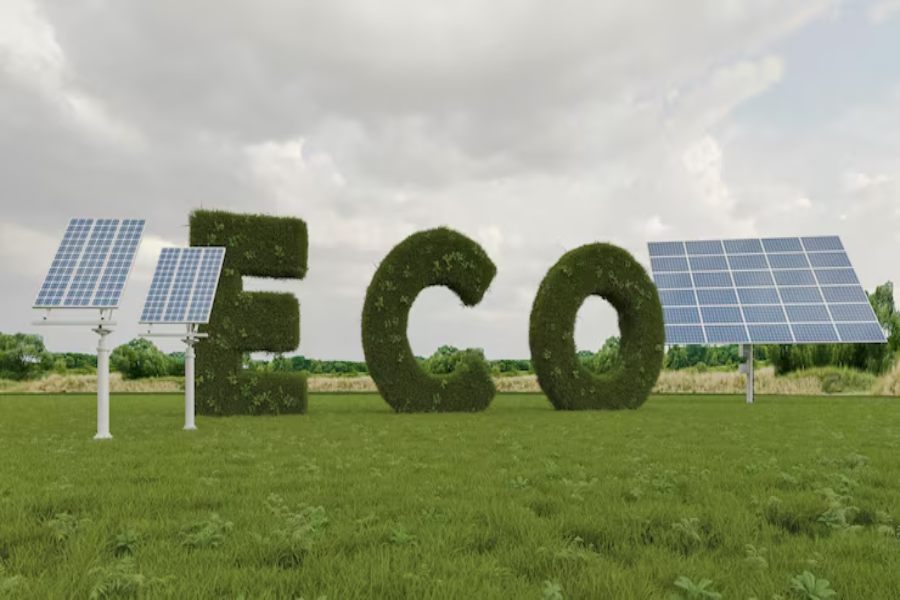Solar energy’s future depends not just on how panels are made—but what happens after they wear out. Old solar parts get a new life—they become valuable materials for making fresh solar panels. Manufacturers can get back materials like silicon, aluminum, and perovskite using efficient recovery techniques. Performance isn’t affected. Energy use and waste are reduced; emissions go down. Recycled solar cells already reach comparable efficiency to virgin materials. Clean energy gets a boost—both environmentally and economically—thanks to this approach that builds an independent supply network. Increased production? Recycled materials are key—they control costs, support employment, and build long-term energy independence.
How Recycled Panels Can Power the Next Generation
Recycled solar materials are the foundations of tomorrow’s clean energy infrastructure and provide remarkable sustainability benefits among other economic advantages. The circular approach to solar manufacturing is not just essential for the environment but provides a practical way to propel industry development.
Reusing Materials in New Solar Panels
New recycling technologies showed that recycled solar cells can match the efficiency of virgin panels. Scientists developed methods to recover all components—covering glasses, electrodes, perovskite layers and charge transport layers—without harmful solvents. Perovskite solar cells can convert up to 25% of solar energy into electricity. These cells use innovative water-based recycling processes that allow complete material recovery without losing performance. This advancement creates a truly circular production model where materials cycle repeatedly through manufacturing instead of becoming waste.
Reducing Emissions Through Circular Production
Solar recycling brings substantial environmental benefits. Recycled perovskite solar cells use 72.6% less primary energy and reduce carbon footprint by 71.2% compared to panels made from virgin materials. These improvements translate to significant sustainability gains:
- Recycled cells reach energy payback times of just one month versus 70 days to 13 months for conventional panels
- Carbon footprint drops to as low as 13.4 grams of CO₂ equivalent per kilowatt-hour, compared to 27.5-158 grams without recycling
- Each recycled panel prevents 97 pounds of CO₂ emissions—a figure that rises to 1.5 tons when panels are reused
Recycled aluminum production needs 95% less energy than mining and refining bauxite. This makes recycling a powerful tool to reduce overall emissions.
Supporting Domestic Solar Manufacturing
Recycling creates essential materials for domestic manufacturing. National Renewable Energy Laboratory research suggests recycled panels could supply 25-30% of America’s solar manufacturing needs by 2040. This circular supply chain improves national energy security by reducing dependence on foreign sources.
Policy and Industry Support for Solar Recycling
Solar panel recycling’s future in the United States depends on government policies and industry initiatives. These measures want to build a sustainable system to manage solar panels at the end of their life through regulations and financial support.
State and Federal Recycling Laws
Each state handles solar panel recycling differently. Washington led the way in 2017 by requiring manufacturers to recycle solar panels. California, Hawaii, New Jersey, and North Carolina developed their own end-of-life guidelines. The EPA made a significant announcement on October 23, 2023 to classify solar panels under universal waste regulations, which makes management requirements simpler.
Federal regulations don’t require solar panel recycling yet. States’ different approaches show they recognize this growing challenge. California’s decision to label PV modules as “universal waste” instead of “hazardous waste” created an easier regulatory framework.
Tax Incentives and Funding Programs
Financial support for solar recycling has grown over the last several years. The Infrastructure Investment and Jobs Act of 2021 supports projects that reduce recycling costs. This act includes a $20 million Solar Energy Technology Recycling Research program. The Inflation Reduction Act adds tax credits for companies investing in recycling facilities.
Manufacturers now have access to two major federal tax credits: the Advanced Manufacturing Production Tax Credit (45X MPTC) and the Advanced Energy Project Investment Tax Credit (48C ITC). These incentives strengthen domestic manufacturing and recycling infrastructure.
Role of Solar Recycling Companies
Companies like PVRecycling drive solar recycling technology forward. Their unique technology recovers 95% of value from used panels. The company’s partnerships extend to more than forty major solar companies.
Some companies run its own recycling program since 2005. The company’s green manufacturing practices show how industry leaders can make sustainability part of their core business.
Conclusion
Recycling solar panels? That’s not just about getting rid of old stuff. It’s about making clean energy a bigger part of our future. Using recycled stuff keeps manufacturers from getting hit with shortages and unpredictable costs. Money from the feds and the state are helping to fund this. Companies already show how recovery and reuse create market advantage. Local jobs are created, local materials are used, and cleaner supply chains result from their operations. The next big thing in solar power? Recycled panels! New tech and changes in policy are making this possible. Future grids won’t just run on sunlight—they’ll run on smarter, cleaner materials from yesterday’s panels.













































Leave a Reply